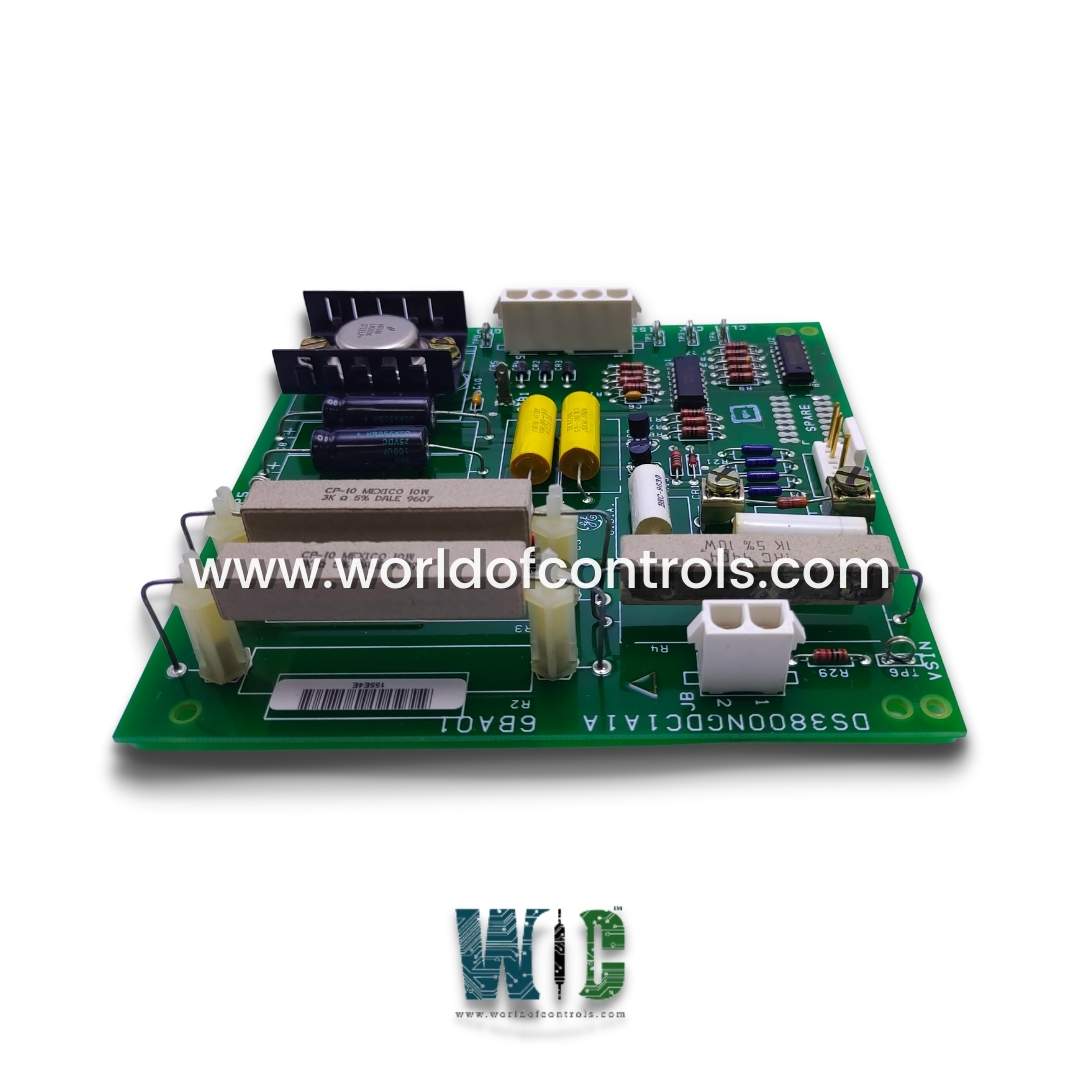SPECIFICATIONS
Part Number: DS3800NGDC1A
Manufacturer: General Electric
Series: Mark IV
Product Type: Ground Detector Board
Availability: In Stock
Country of Manufacture: United States (USA)
Functional Description
DS3800NGDC1A is a ground detector board manufactured and designed by General Electric. In the NGDC PC card, an oscillator plays a pivotal role in conjunction with a current sensing resistor (R4) to monitor and detect potential leakage currents from the field to ground. This arrangement is crucial for maintaining the integrity of the system.
Oscillator Configuration
- The oscillator within the NGDC PC card is intricately configured to enhance its effectiveness in monitoring and detecting potential leakage currents. It is strategically connected through a current sensing resistor (R4) to the midpoint of attenuators associated with both the field and the module.
- This strategic connection establishes a closed-loop system, with the opposite end of the oscillator grounded. This closed-loop design is crucial for creating a controlled environment that facilitates the accurate detection of leakage currents within the system.
Attenuators and Field Connection
- Attenuators linked to the field and module play a vital role in controlling the amplitude of the oscillator's signal.
- This configuration ensures that the oscillator induces a precisely controlled 50 V potential across the attenuators. By regulating the amplitude in this manner, the system is well-equipped to detect any leakage currents originating from the field. The attenuators act as a key interface, finely tuning the oscillator's output for optimal sensitivity.
Leakage Current Sensing
- As the oscillator oscillates the 50 V through the attenuators, any leakage current from the field to ground induces a voltage across the sensing resistor (R4).
- This design allows for highly accurate sensing of potential issues, especially at the central region of the field.
- The meticulous placement of the sensing resistor enables the early detection of even minor leakage currents, contributing to the proactive maintenance of system integrity.
Oscillator Output and Signal Processing
- Following the sensing phase, the voltage across the sensing resistor is further attenuated and directed to circuits on the NGDD (Next-Generation Detection and Diagnostic) module. Within this module, the attenuated signal undergoes sophisticated signal processing.
- Any deviations from the expected values are scrutinized, and the system promptly identifies ALARM or FAULT conditions. This mechanism ensures a swift and accurate response to potential anomalies, minimizing the risk of system failures.
Output Calibration and Tolerance
- To maintain precision in leakage current detection, the actual output of the oscillator, set at 50 V, is subject to variations influenced by the tolerance of parts values in the clamp circuit within the module.
- Components such as CR4,3,12-14 play a pivotal role in calibrating the output, ensuring that the system operates with a high level of reliability and accuracy even under varying conditions.
Transient Reduction with Capacitors
- In order to mitigate potential disruptions caused by the oscillator's output, capacitors Cl and C2 are strategically integrated into the system. These capacitors limit the rate of the oscillator's output, effectively reducing transients on the field.
- By smoothing the output waveform, these capacitors prevent sharp rises and falls, thereby ensuring stability in the system and minimizing the impact of transient events.
WOC has the largest stock of GE replacement parts. WOC is happy to assist you with any of your automation requirements. For pricing and availability on any parts and repairs, kindly get in touch with our team by phone or email.
FREQUENTLY ASKED QUESTIONS
What is DS3800NGDC1A?
It is a ground detector board manufactured and designed by General Electric.
What is the purpose of the oscillator on the NGDC PC card?
The oscillator on the PC card serves the crucial function of detecting potential leakage currents from the field to the ground. It is strategically connected through a current sensing resistor (R4) to the midpoint of attenuators associated with the field and the module.
How is the oscillator connected within the system?
The oscillator is connected to the midpoint of attenuators, which are in turn connected to both the field and the module. The other end of the oscillator is grounded, establishing a closed-loop system that facilitates the precise detection of leakage currents.
What is the significance of the oscillator inducing a 50 V potential across the attenuators?
The oscillator's role in inducing a 50 V potential across the attenuators is crucial for facilitating the detection of leakage currents from the field. This controlled potential allows for accurate monitoring, especially at the center of the field.
